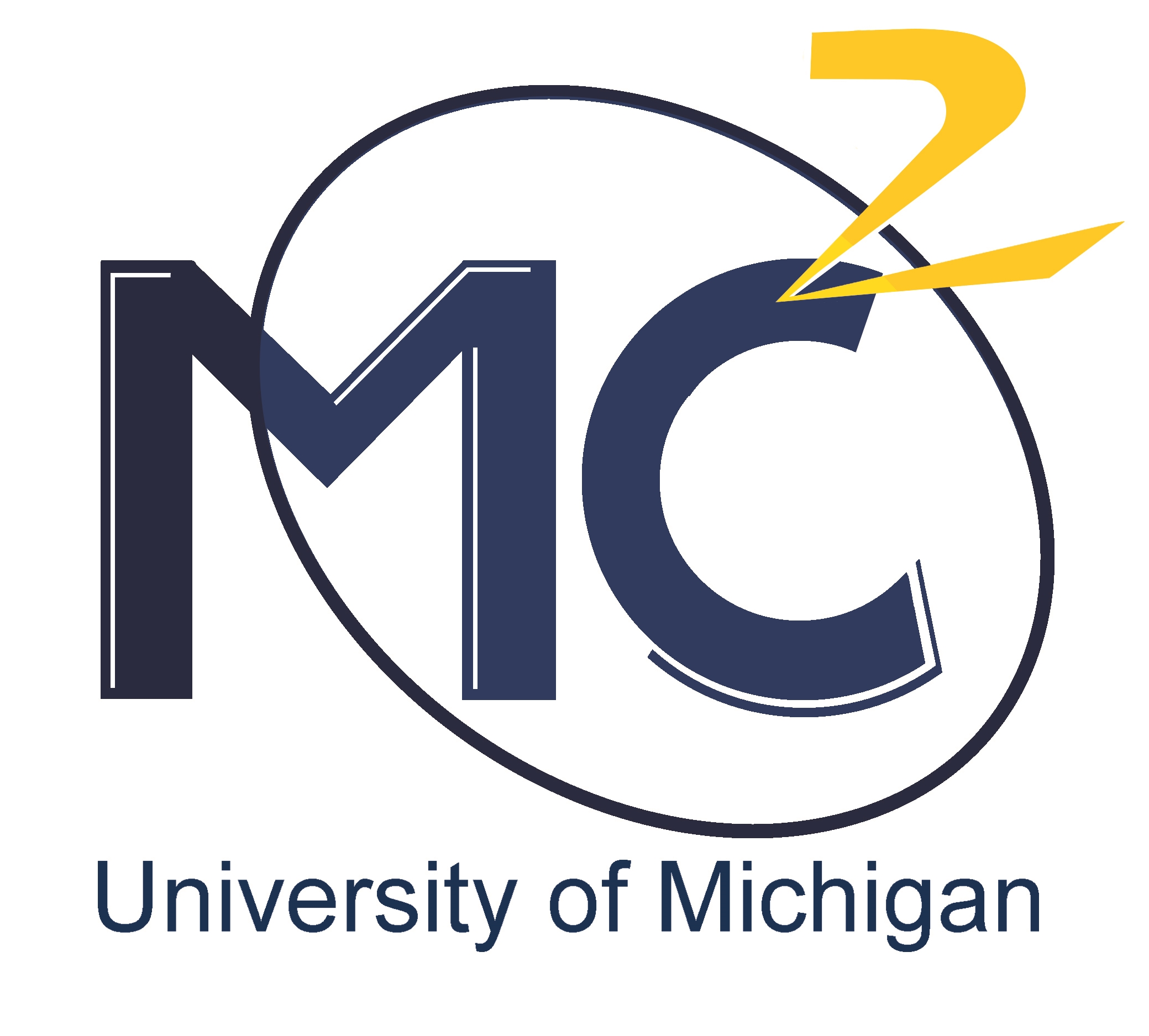Advances in In-Situ (S)TEM: Moving Beyond Movies
Modern electron microscopy is much more than just TEM imaging. Diffraction, EELS/EDS, and even 4D STEM data can be continuously acquired and readily linked to the applied in-situ stimuli. These rich datasets can provide new insights into materials functionality at the nanoscale. New approaches for real-time data processing can enhance decision-making, which is essential for improving the efficiency of in-situ experimentation.
 This workshop will include live demonstrations of in-situ TEM, diffraction, EELS, and 4D STEM acquisition using the GIF Continuum at the University of Michigan, as well as several talks highlighting recent progress in developing and using in-situ techniques.
This workshop will include live demonstrations of in-situ TEM, diffraction, EELS, and 4D STEM acquisition using the GIF Continuum at the University of Michigan, as well as several talks highlighting recent progress in developing and using in-situ techniques.
Register for the in-person workshop.
If you are unable to attend in person and wish to attend a streaming version online via Zoom, please register via the following link: https://umich.zoom.us/webinar/register/WN_PYFPqj4JTlKym81Jwy8Sbw
Schedule
| 9:00 AM | Gatan & University of Michigan | Welcome |
|
9:15 AM |
Abby Liu |
In-situ investigation of Ga droplet nitridation using environmental transmission electron microscopy |
| 9:45 AM | Ben Miller Gatan |
Making in-situ experiments (a bit) easier – Recent updates to the Gatan in-situ ecosystem |
| 10:30 AM | Break | |
| 10:45 AM | Demo: TEM Imaging with Live Python Processing | |
| 11:30 AM | Cory Czarnik Gatan |
Detecting Electrons in the 21st Century |
| 12:00 PM | Lunch | |
| 12:45 PM | Demo: Energy-Filtered In-Situ Diffraction Videos | |
| 1:30 PM | Roberto dos Reis Northwestern University |
Strategies for In-Situ 4D STEM Data Analysis |
| 2:15 PM | Break | |
| 2:30 PM | Demo: High-Speed Continuous In-Situ Electron Energy Loss Spectroscopy (EELS) | |
| 3:15 PM | Kevin Field University of Michigan |
Advancing TEM Workflows with Machine Learning for In-Situ Ion Irradiation Experiments |
| 3:45 PM | Demo: Continuous In-Situ EELS Mapping with Live Quantification | |
| 4:30 PM | Demo: In-Situ (5D) 4D STEM with Energy Filtering | |
| 5:00 PM | Gatan & University of Michigan | Wrap-Up |
Abstracts
 Advancing TEM Workflows with Machine Learning for In-Situ Ion Irradiation Experiments
Advancing TEM Workflows with Machine Learning for In-Situ Ion Irradiation Experiments
Recently, interest has grown in developing high-performance nuclear materials for advanced reactor concepts. To meet the deployment schedule for these advanced reactor deployments, high-throughput characterization tasks are needed to shorten the materials qualification timeline. This talk will highlight research directions focused on automating the quantitative workflows with high fidelity using in-situ transmission electron microscopy (TEM) ion irradiations for radiation resistance evaluations. Specifically, general concepts around machine learning (ML) tasks will be presented, including object detection and quantification. The presentation will progress towards a discussion regarding challenges associated with deploying common ML architectures to TEM-based quantification and recent advances in solutions to resolve these issues. These solutions include our efforts in developing techniques for large-scale training database formation using synthetic data generation. Finally, the power of the automated approaches will be demonstrated on in-situ TEM ion irradiation experiments where direct links between defect nucleation, mobility, and growth based on alloy chemistry and microstructure can be extracted in mere seconds to minutes of data post-processing. The presentation will conclude with a brief discussion on the status of developing augmented reality, such as TEM-based experiments, using the presented ML approaches.
Making in-situ experiments (a bit) easier – Recent updates to the Gatan in-situ ecosystem - Presented by Ben Miller, Gatan
The prevalence of in-situ TEM has increased dramatically in the past 10 years. This is an indication of progress toward making in-situ experiments more accessible to researchers and an increased awareness of the value of in-situ investigations. However, there remain significant challenges to acquiring and analyzing high quality data. Some of the challenges include capturing dynamic events, reducing undesired dynamics, aggregating and organizing in-situ data, determining the effect of the electron beam, and observing a representative sample. The specific issues underlying these challenges range from straightforward technical problems to pervasive and seemingly intractable problems for which comprehensive solutions may never exist. Nevertheless, some issues within several of the in-situ challenges have been addressed by recent updates to Gatan’s in-situ ecosystem, which will be presented.
Detecting Electrons in the 21st Century - Presented by Cory Czarnik, Gatan
Detectors for EM applications have rapidly evolved over the last 12 years due to the confluence of CMOS technology scaling and performance, PC price & performance, and high-speed data transfer & processing. The introduction of high-speed sensors has expanded the traditional use of “cameras,” which can record images and diffraction patterns into multi-purpose detectors that can record in-situ experiments, 4D STEM datasets, and high-speed tomography, … while simultaneously employing direct detection and counting to maximize signal-to-noise in output datanin real time. This presentation will describe the arc of the evolution of EM sensor technology with an eye toward the impact on improving data collection, both spatially and temporally.
 Strategies for In-Situ 4D STEM Data Analysis
Strategies for In-Situ 4D STEM Data Analysis
The advent of 4D STEM has revolutionized our ability to characterize materials at unprecedented spatial and temporal resolutions. However, the sheer volume and complexity of the data generated pose significant challenges for analysis. This talk will present cutting-edge strategies for the analysis of in-situ 4D STEM datasets, focusing on the development of smart, scalable techniques to manage, process, and extract meaningful information from these voluminous datasets.
We will explore a range of computational approaches that leverage both traditional and machine learning algorithms to address the bottlenecks often encountered in real-time data analysis. Special emphasis will be placed on the integration of automated data reduction techniques, which are essential for distilling high-dimensional data into actionable insights. Additionally, the talk will highlight case studies where these methodologies have successfully enabled the identification of material properties and behaviors that are critical for advanced material design and performance assessment.
 In-situ investigation of Ga droplet nitridation using environmental transmission electron microscopy
In-situ investigation of Ga droplet nitridation using environmental transmission electron microscopy
In-situ environmental transmission electron microscopy (ETEM) is a powerful technique that allows individuals to directly observe and manipulate materials at the nanoscale in real time. Unlike conventional TEM, where samples are typically static and pre-prepared, ETEM enables in-situ observations of materials under controlled environmental conditions, such as temperature, electrical biasing, and gas atmosphere. In this presentation, various specialized holders, such as heating holders and in-situ gas flow holders, will be introduced, along with discussions on sample preparation and the ETEM setup. We will present in-situ observations of Ga droplet nitridation with ammonia exposure using the Titan ETEM at Brookhaven National Lab. Furthermore, we will compare experiments conducted in ETEM with those in the molecular-beam epitaxy (MBE) chamber, discussing the differences and challenges encountered.